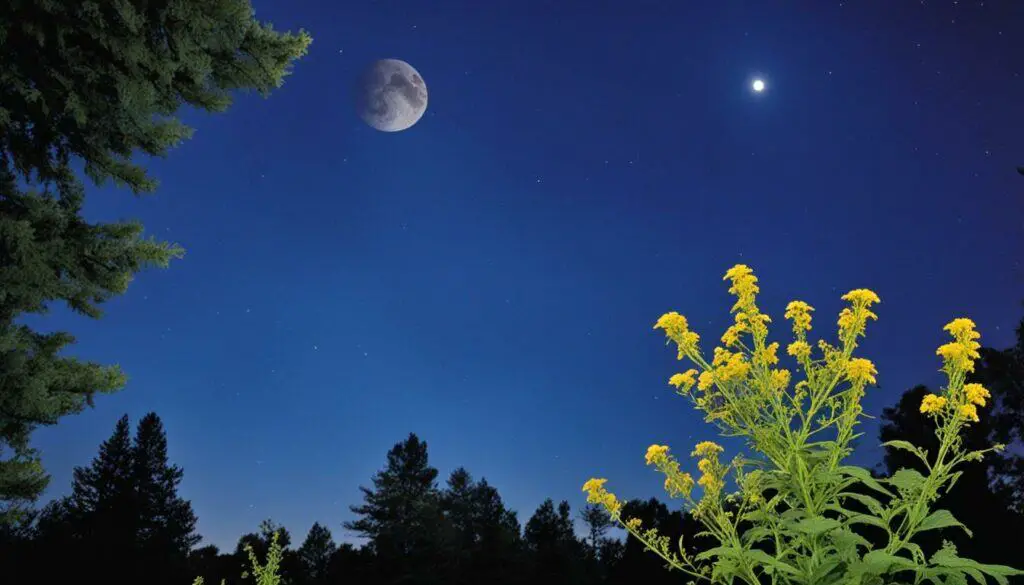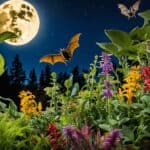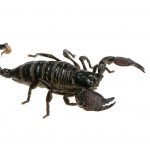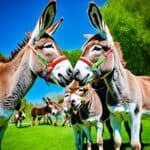Some yards are full of wildlife buzzing around, while others are quiet. Do you wonder how to bring bats to your yard naturally? Understanding what bats need in their homes is key to this.
Bats are unique as the only mammals that truly fly. You can make your yard more welcoming to them. One way is by planting native plants that attract insects. Bats love to eat these bugs. Don’t forget to have a fresh water source for them and avoid using harmful pesticides.
Putting up bat houses offers them a safe place to live. You can also try using special technology like the Echo Meter Touch 2 to learn more about them. These steps help create a spot where bats will thrive in your own yard.
Understanding the Benefits of Attracting Bats to Your Yard
Bats are key to a healthy outdoors. By using special bat conservation tips and focusing on natural pest control, you can welcome them in.
Bats are exceptional at eating pests. One bat can eat a lot, like up to a thousand moths and mosquitoes in an hour. This means you can use less harmful sprays in your garden. Bats are super important for a good outdoor area because of this.
Besides controlling pests, bats help in other ways. They help plants grow by pollinating them and spreading seeds. This leads to more types of plants and a better garden. By using easy bat conservation tips, you can make a place where bats help both the garden and nature.
So, having bats around is good for dealing with pests and making a better garden. Taking care of bats helps the whole area thrive and be more natural.
Creating a Bat-Friendly Environment in Your Garden
To make your garden bat-friendly, you need to focus on their essentials: food, water, and shelter. Bats need a special place to drink, so a pond or a clear water trough works well. Make sure they can get to the water easily.
Shelter for bats is very important. If you can, keep dead trees in your garden. They are a natural home for bats. You can also put up a bat house. This gives bats a good place to live. These houses should be warm and get the right amount of sunlight. If you place them well, you can have many bats in your garden.
| Needs | Solutions |
|---|---|
| Food | Plant native vegetation that attracts insects, the primary food source for bats. |
| Water | Install a pond or water trough to suit their drinking on the wing behavior. |
| Shelter | Construct bat houses and keep dead trees when safe for roosting. |
| Temperature Regulation | Ensure bat houses receive adequate sunlight without extreme exposure. |
By meeting these needs, you create a home for bats. Your garden becomes better for the ecosystem. Bats eat insects, helping with pest control. This effort is great for your local wildlife and makes your garden more lively.
The Importance of Native Plants in Attracting Bats
Creating a bat-friendly garden design helps bring bats to your yard. Using native plants is key. They support a rich environment that bats love.
Why Native Plants?
Native plants are perfect for the local weather and soil. This makes them easy to care for and tough. They also draw native insects, which are vital for bats to eat. Planting native plants that attract bats makes a habitat that can support bat populations on its own.
Types of Native Plants that Attract Bats
To make a bat-friendly garden design work, pick the best plants. Choose night-blooming flowers like evening primrose, moonflower, and jasmine. They open at night and have scents that attract insects. Trees and shrubs like oak, willow, and sycamore add bat homes and food sources.
Realizing how important native plants that attract bats are can turn your garden into a bat-friendly zone. This not only joins bats but also helps your environment thrive with biodiversity.
How to Construct and Install Bat Houses
Building and putting up bat houses is a great way to help bats. It gives them a safe place to live, which is good for the ecosystem. It’s an excellent project for anyone who wants to help local wildlife.
The Best Materials for Bat Houses
When making bat houses, choose materials wisely. Cedar is best, as it’s strong and doesn’t rot easily. It’s also safe for bats, unlike some types of treated wood.
Optimal Locations for Bat Houses
Where you place bat houses matters a lot. They should get plenty of sunlight, from 6 to 12 hours a day. Also, they should be mounted high up, 12 to 20 feet, to keep them safe from other animals.
Maintenance of Bat Houses
Bat houses need regular checks to stay in good shape. Look at them every year for any signs of damage or pests. Cleaning them and fixing problems will help bats use them for a long time.
Providing Water Sources for Bats
Bats need water to survive, just like many animals. They drink while flying, swooping down to sip water from a big, clear area. This method requires enough space without anything blocking their way.
Large, open ponds or pools are best for bats. These places allow bats to fly easily. Keeping the area around the water free from plants or things that can get in the way is important. This makes it easier for bats to get to the water. A clear path to the water is a must, whether it’s a natural pond or a pool you’ve made.
Having the right water sources in your yard can help bats. It meets their water needs and makes them visit more. Adding these water spots makes your place better for bats.
How do you attract native bats to your yard?
Attracting native bats to your yard is both rewarding and important. You should focus on what bats need for food, shelter, and water. Paying attention to these factors will make your yard a good place for bats to live. It also helps to know what to avoid to keep both bats and your home safe.

Essential Bat Habitat Components
To make your yard a bat-friendly place, there are key things to consider:
- Food Sources: Native bats eat insects. By planting native plants that attract bugs, you give bats plenty to eat.
- Shelter: Bat houses are a great idea for shelter. Make sure they are strong and placed where bats can catch the sun.
- Water: Bats drink while flying. A big, open water source like a pond is perfect for them.
Avoiding Common Pitfalls
Getting bats to your yard is exciting, but you need to watch out for some common mistakes:
- Avoid Pesticides: Pesticides kill insects and harm bats by reducing their food.
- Proper Bat House Placement: Bats won’t use houses in the wrong place. They should be high up and get a lot of sunlight.
- Home Entry Points: Seal any openings in your home to stop bats from coming in.
By using these tips, you can make your yard a great home for native bats. Focus on what bats need and keep your yard safe for them. This will attract bats and keep them happy.
| Essential Components | Details |
|---|---|
| Food Sources | Plant native vegetation that attracts insects |
| Shelter | Install bat houses in open, sunny areas |
| Water Sources | Provide large, unobstructed ponds or pools |
Reducing Pesticide Use in Your Yard
It’s key to use fewer pesticides or none at all in your yard. This helps keep bats healthy and boosts the bug population they eat. It’s a win-win for bats and insects.
Switching to organic options helps bats control pests naturally. They do a great job at it. This makes your garden safer and better for the environment. It also helps your yard be more diverse and healthy.
Less pesticides means a better place for bats and helpful bugs. This leads to a more balanced ecosystem. Nature’s ways to fight pests can take over, improving your garden’s look and health.
Common Bat Species in North America
Bats are key to keeping our environment healthy in North America. They offer many advantages. There are two main types of bats in North America: those that eat insects and those that feed on nectar. Knowing what these bats eat and where they live can help you make your yard a place they will visit.
Insectivorous Bats
Insect-eating bats are the most seen in North America. They are important because they control insect populations. For example, Little Brown Bats and Big Brown Bats eat a lot of mosquitoes, moths, and beetles. This means less need for pesticides, which makes your garden safer and healthier.
Nectarivorous Bats
Bats that feed on nectar are fewer in number but serve an essential function. They help pollinate in the deserts of the Southwest. Bats like the Lesser Long-Nosed Bat and the Mexican Long-Tongued Bat drink nectar from night-blooming flowers. By doing this, they aid in the pollination of local cacti and agave. This helps increase plant life in dry areas.
| Category | Common Species | Primary Diet | Habitat |
|---|---|---|---|
| Insectivorous Bats | Little Brown Bat, Big Brown Bat | Insects | Widespread across North America |
| Nectarivorous Bats | Lesser Long-Nosed Bat, Mexican Long-Tongued Bat | Nectar | Southwestern deserts |
Designing a Bat-Friendly Landscape
Designing a space that welcomes bats takes careful planning. You have to think about what they eat and where they live. By choosing the right plants and learning about their habits, you can turn your home into a bat-friendly place.
Incorporating Night-Blooming Plants
Night-blooming plants are key because they bring in insects at night. For example, moonflowers and evening primrose smell lovely and bloom in the evening. This attracts moths, which are a favorite food of bats. Having these plants means more bats will come to eat, keeping your garden bug-free.
Creating Shelter with Trees and Shrubs
Bats need a place to stay safe and sleep. Trees and shrubs provide perfect hiding spots. Oaks, willows, and pines are great for bats because they have thick leaves and tiny spaces. Here, they can stay hidden and protected.
Add dense shrubs for extra protection during the daytime. Planting these in your yard means bats will have plenty of places to call home. This helps build a community of bats in your area.
Creating a good spot for bats with the right plants and shelters does more than just bring bats. It makes your garden a diverse and healthy place. Your yard will be buzzing at night, playing a part in nature’s balance.
FAQ
How do you attract native bats to your yard?
To attract native bats, plant flowers that bugs like. Add a water spot bats can easily reach. Stay away from bug killers. Also, putting up bat houses and using tools like
Echo Meter Touch 2 can help.
What are some bat habitat essentials?
A bat-friendly spot needs lots of bugs, places to hide, and clean water. Stop using pesticides. Keep up with care for bat houses and shelters.
Why should I attract bats to my yard?
Bats eat a lot of pests, which means less need for harmful chemicals. They target bugs like moths and mosquitoes, making your garden better.
How can I create a bat-friendly environment in my garden?
Make your garden bat-ready by adding native plants. Ensure water safety. Put up bat houses right and cut back on pesticides.
Why are native plants important for attracting bats?
Native plants bring in plenty of bugs, which bats need. Flowers that bloom at night draw in the insects bats hunt.
What types of native plants attract bats?
Plants such as evening primrose, datura, and yucca draw bugs that attract bats. A range of flowers supports a big bug population for bats.
What are the best materials for constructing bat houses?
Choose sustainably sourced cedar for bat houses. It lasts long and weathers well, offering a good home for bats.
Where should I install my bat house?
Mount bat houses where they get lots of sun and are high up. They should be clear of obstacles and safe from predators.
How do I maintain bat houses?
Keep bat houses in good shape by checking them regularly. Make sure they’re still secure, clean them yearly, and touch up the paint as needed.
What type of water sources do bats need?
Bats prefer big, open water like ponds for flying drinks. Make sure these spots are easy for them to reach.
What are the essential components of a bat habitat?
Bat homes need food, shelter, and water. It’s key to avoid pesticides and grow a varied range of plants.
How can I avoid common pitfalls when attracting bats?
Steer clear of pesticides and wrong placements for bat houses. Regularly caring for shelters is vital, as is blocking off bat entry indoors.
Why should I reduce pesticide use in my yard?
Less pesticides mean more bugs for bats to eat. It also keeps your garden safe and eco-friendly.
What are some common bat species in North America?
In North America, you’ll find many Little Brown Bats and Big Brown Bats. The Lesser Long-Nosed Bat prefers southwestern deserts.
What are insectivorous bats?
Bats that eat insects target night bugs like moths and mosquitoes. They’re key in keeping the pest population under control.
What are nectarivorous bats?
Nectar bats rely on flower nectar and are vital for pollination. They live in places with lots of flowers, especially the southwestern deserts.
How do I design a bat-friendly landscape?
Make a landscape friendly to bats with night flowers and native plants. Trees and shrubs give them places to hide and rest.
Why should I incorporate night-blooming plants in my garden?
Night flowers attract bugs at night, which bats feed on. Good choices are evening primrose and moonflowers.
How can I create shelter for bats using trees and shrubs?
Letting some trees die and planting thick shrubs offers natural shelter. Varying plant life helps create more hiding spots for bats.







